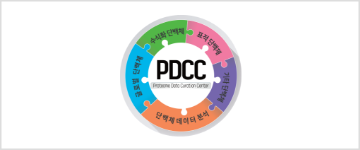2025 Fall
International Convention of PSK
2025 CONVENTION
Abstracts
The CCN2/c-MYC axis: A critical mediator of tamoxifen-resistant breast cancer cell growth
- Chan-Hyeok Lee1, Soyeon Jung1, Donghyun Kim1, Eun Kyung Kim1, Young-Mi Kim*1
- 1College of Pharmacy and Institute of Pharmaceutical Science and Technology, Hanyang University
Tamoxifen resistance poses a significant clinical challenge, affecting nearly one-third of estrogen receptor-positive breast cancer patients. Cellular communication network factor 2 (CCN2), an extracellular matrix-associated protein, has been implicated in anticancer drug resistance, but specific molecular mechanisms remain unclear. Here, we identified a CCN2-c-MYC regulatory pathway that drives proliferation in tamoxifen-resistant breast cancer cells. CCN2 expression was significantly elevated in tamoxifen-resistant MCF-7 (TAMR-MCF-7) cells compared to parental controls. CCN2-knockdown TAMR-MCF-7 cells (TAMR-shCCN2) showed markedly reduced cell proliferation, colony formation, and 3D spheroid formation. Furthermore, in vivo xenograft experiments demonstrated significantly decreased tumor growth in mice implanted with TAMR-shCCN2 cells, confirming CCN2\'s critical role in cancer proliferation. Mechanistically, the expression of c-Myc, a key transcriptional regulator driving cancer cell proliferation, was substantially elevated at both mRNA and protein levels in TAMR-MCF-7 cells, while CCN2 knockdown resulted in c-MYC downregulation and reduced nuclear localization. CCN2 overexpression in MCF-7 cells directly enhanced c-MYC expression. Collectively, these data establish CCN2 as a critical regulator of tamoxifen-resistant breast cancer growth via c-MYC activation, highlighting the CCN2/c-MYC axis as a potential therapeutic target.
Q&A
- There are no registered questions









































